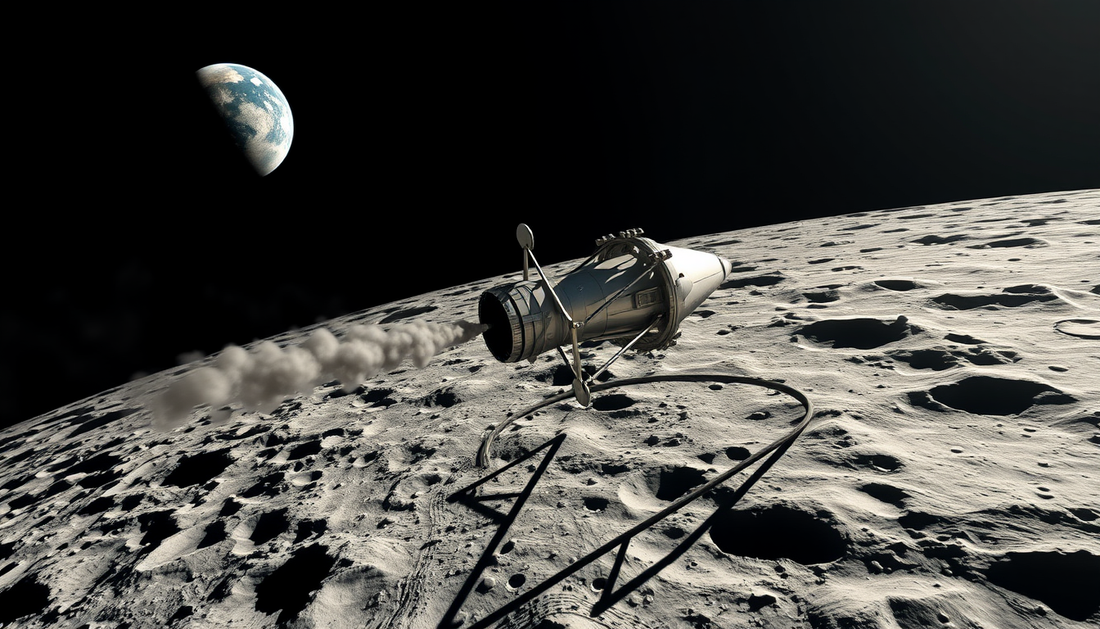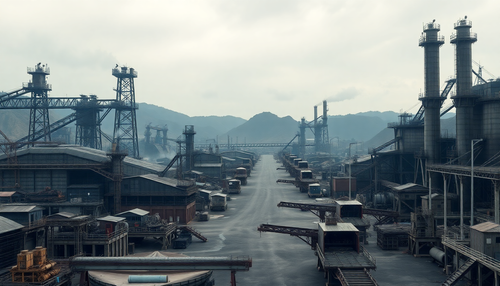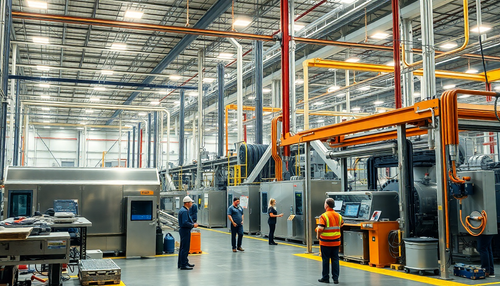Astrobotic's Peregrine lunar lander failed to reach the Moon due to a problem with a single valve in the propulsion system, according to a mission report released on Tuesday. The company's leadership said in a press conference that engineers have redesigned the valve and introduced additional redundancy in the propulsion system of their next lander, Griffin, to ensure the issue does not occur again.
The report comes from a review board assembled shortly after the completion of the Peregrine mission in January. That mission encountered problems just hours after launch on January 8th, when engineers activated the spacecraft's propulsion system for the first time in orbit.
At that point, the fuel and oxidizer tanks were supposed to have been pressurized with helium, by opening two pressure control valves, or PCVs. But the helium began to flow "uncontrollably" through the second valve into the oxidizer tank, explained Astrobotic CEO John Thornton during the press conference.
"This caused a significant and rapid overpressurization of the tank," he said. "Unfortunately, the tank then ruptured and subsequently leaked oxidizer for the remainder of the mission."
The PCV failed to reseal, likely due to a mechanical failure caused by "vibration-induced relaxation" between some threaded components inside the valve, said review board chair John Horack. Telemetry data was able to identify the location and timing of the anomaly, and this data was consistent with the autonomous sequence to open and close the PCV and the valve's position in the propulsion system. Engineers were also able to replicate the failure in ground tests.
While the oxidizer leak continued, the Astrobotic team was able to stabilize the spacecraft, charge its batteries, and power its payloads. But the issue was fatal to the mission, and after ten and a half days, the spacecraft re-entered the Earth's atmosphere and burned up.
The 34-person review board included 26 internal company personnel and 8 external members. The board reviewed not just the data collected during the mission, but also all the data from the flight qualification campaign and component testing. In the end, it determined that the probable cause of the malfunction was, in fact, the failure of that single helium PCV in the propulsion system.
Why Valves Are an Engineer's Worst Nightmare
The board also compiled a timeline of events leading up to the failure, and it starts in 2019, when Astrobotic contracted an unnamed supplier for the development of the propulsion feed system. When that supplier began experiencing technical and supply chain issues due to the COVID-19 pandemic, Astrobotic made the decision in early 2022 to terminate their contract and finish the partially-assembled feed system internally.
"By that point, we had already made the decision to do the Griffin propulsion system internally, to do more vertical integration," said Astrobotic mission director Sharad Bhaskaran. "We had developed a lot of the capabilities to do that propulsion integration... That also burned off some of the risk of going into the Griffin program, which is much more complex than Peregrine."
But Astrobotic engineers began encountering issues with the original supplier's propulsion components — particularly the PCVs. In August 2022, they switched to a different, unnamed PCV supplier, and those valves were installed in the lander module.
A final set of tests on the propulsion system showed leaks in one of the two PCVs — but not the one that ultimately leaked in orbit. That one tested well; the leaky one was repaired. While Bhaskaran acknowledged that the second PCV was identified "as a risk in our risk register" due to the leak with the first during testing, the engineers ultimately deemed the failure likelihood to be low because the lander module passed the final acceptance test.
He justified not replacing the second PCV, saying it was located much farther back on the spacecraft and would have required an "extensive surgery" on the lander module, invalidating the final test and introducing additional risks that come with disassembly and reassembly.
Horack echoed that the team's decision-making was sound throughout: "I really found that, in looking at the team and observing what happened... I can't see any decision that was made in the flow that led to launch, where I would have said, 'Hey, I think you guys should have done that differently.'"
These findings have already started to inform the development of the much larger Griffin lander module, scheduled to be launched to the Moon before the end of 2025. In addition to redesigning the valve, the engineers have introduced a regulator in the propulsion system to control the flow of helium to the fuel and oxidizer tanks, and backup latch valves as additional redundancy in case the PCV issue occurs again.
Lessons Learned for Future Lunar Missions
The Peregrine mission failure serves as a stark reminder of the critical role that seemingly simple components like valves can play in the success or failure of a complex space mission. Valves, with their intricate moving parts and susceptibility to issues like vibration-induced relaxation, have long been a source of headaches for aerospace engineers.
The Astrobotic team's decision to bring more of the propulsion system development in-house for the Griffin lander, and to introduce additional redundancy and robustness, demonstrates their commitment to learning from the Peregrine experience and applying those lessons to future missions. As the commercial space industry continues to push the boundaries of lunar exploration, the ability to anticipate and mitigate these types of component-level failures will be crucial to ensuring mission success.
While the Peregrine mission may have ended in disappointment, the insights gained from its failure will undoubtedly contribute to the success of Astrobotic's future endeavors, as well as the broader advancement of lunar exploration capabilities. As the company's CEO John Thornton said, "We're going to get back up, we're going to learn from this, and we're going to go back to the Moon."


















































